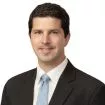- within Compliance, Consumer Protection, Government and Public Sector topic(s)
- with readers working within the Business & Consumer Services and Construction & Engineering industries
Patent-eligibility of "physical" claims can be misleading. After all, a general purpose computer is a physical object but does not impart patentability to otherwise unpatentable software claims. In contrast, a physical machine is not invalid for lack of patent-eligibility simply because it includes software. The District of Delaware recently provided some guidance between these two extremes, holding a physical process for creating recycled glass is patent-eligible as not being drawn to an abstract idea.
The case of Green Mountain Glass, LLC v. Saint-Gobain Containers, Inc., Civ. Action No. 14-392-GMS (D. Del. October 11, 2016) involved claims that selected "virgin" glass, determined the percentages of components in the glass, and created recycled glass products from the selected glass. The court analyzed the claims under the Alice framework and found there to be no abstract idea:
[T]he acts of "selecting virgin glass," "determining percentages of at least said selected components of said mixed color glass cullet," and "creating recycled glass products from said calculated composition" are not steps that are typically considered abstract, i.e., they do not recite an algorithm, a mathematical formula, a process directed to laws of nature, or fundamental economic practices... Instead, they recite steps grounded in physical action.
The court continued that an infringer could not perform the acts of the claims with a pen and paper, but rather, "[t]he claims require steps that the glass-maker must physically carry out."
The court dismissed Saint-Gobain's argument that the claims were similar to those in Parker v. Flook, in which the Supreme Court invalidated claims directed to updating alarm limits in a catalytic converter process by measuring a temperature
and using an algorithm to determine an updated alarm limit. Instead, the court found the claims of the patent-at-issue to be closer to those of Diamond v. Diehr, in which the Supreme Court upheld a more physical process directed to molding
synthetic rubber.
Takeaway:
Green Mountain Glass follows a longer line of cases finding physical inventions to be patent-eligible. The exact nature of the "physicality" must be further analyzed to determine whether the claims pass muster under §101, but this case shows how a
physical application of an otherwise unpatentable process can obtain patent-eligibility of software or method claims.
The content of this article is intended to provide a general guide to the subject matter. Specialist advice should be sought about your specific circumstances.


